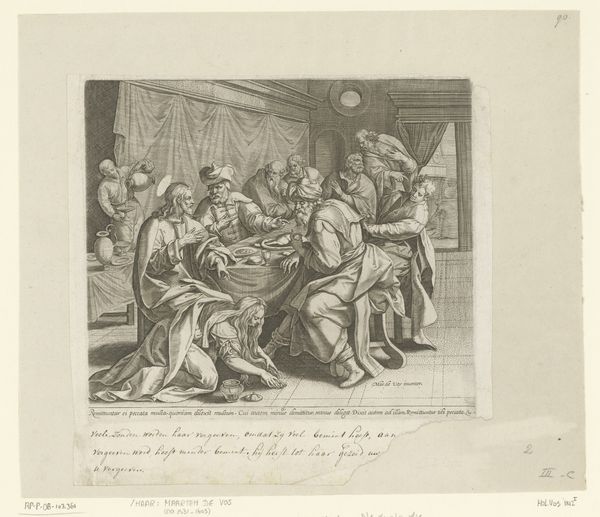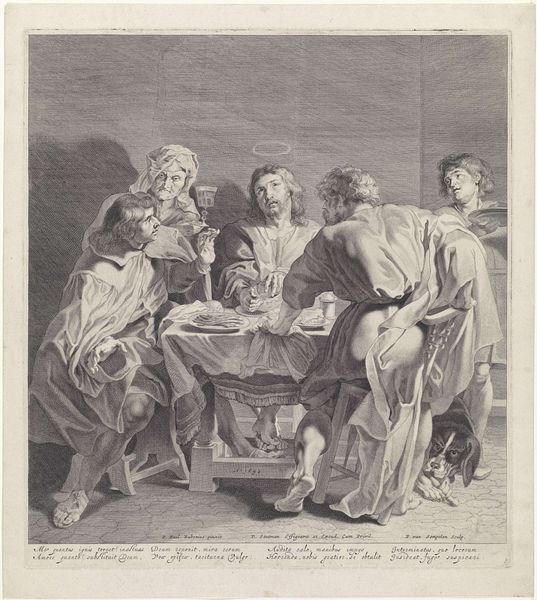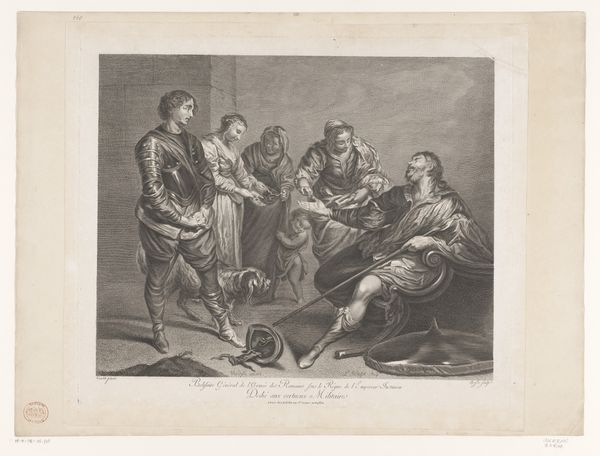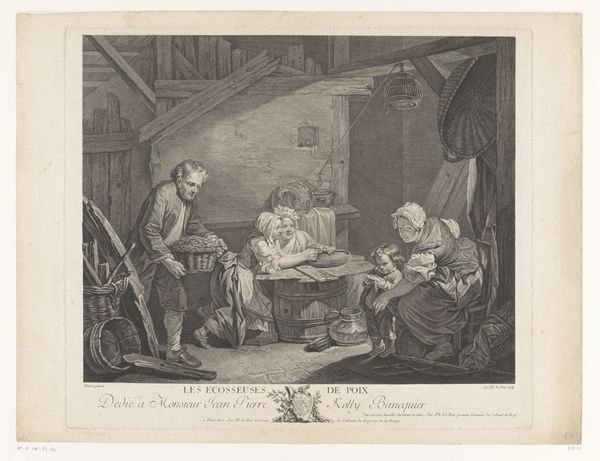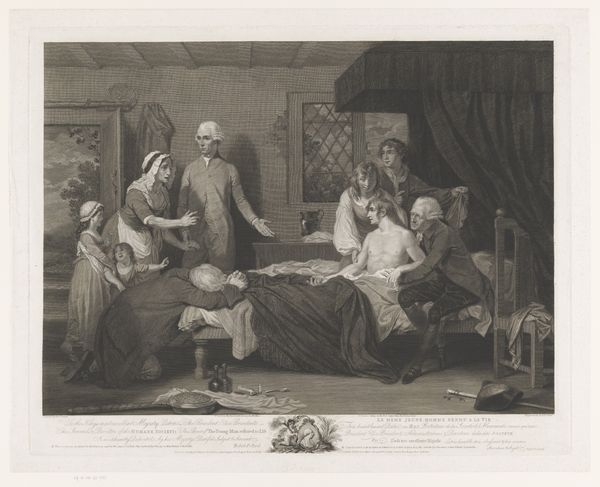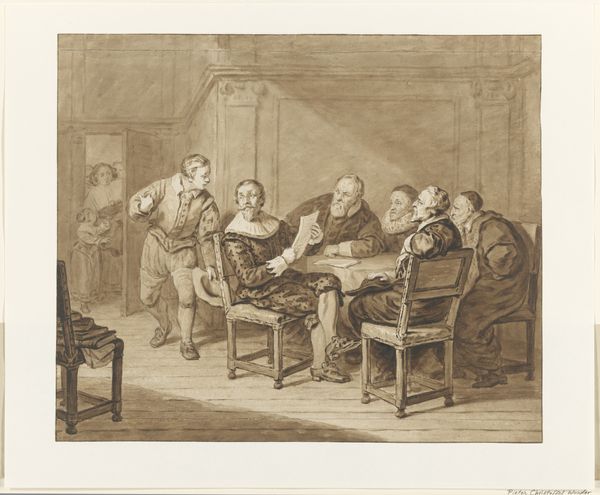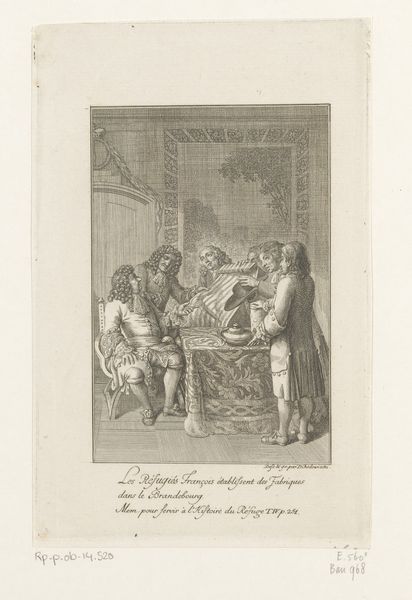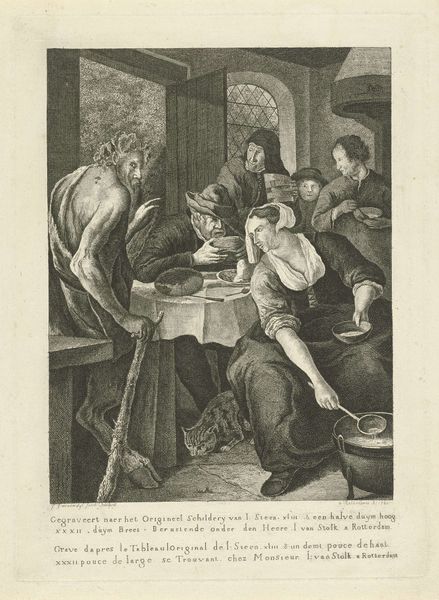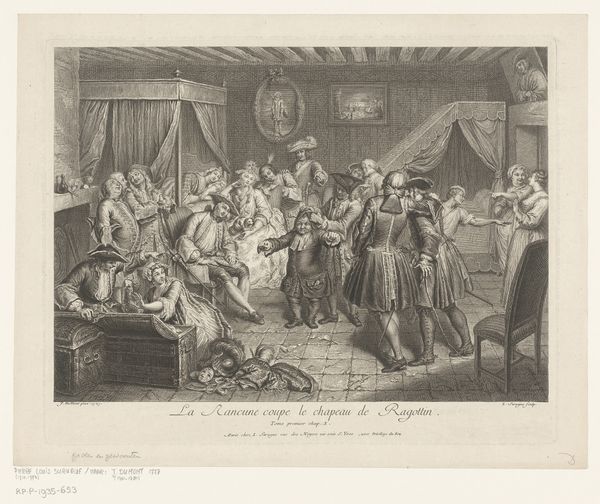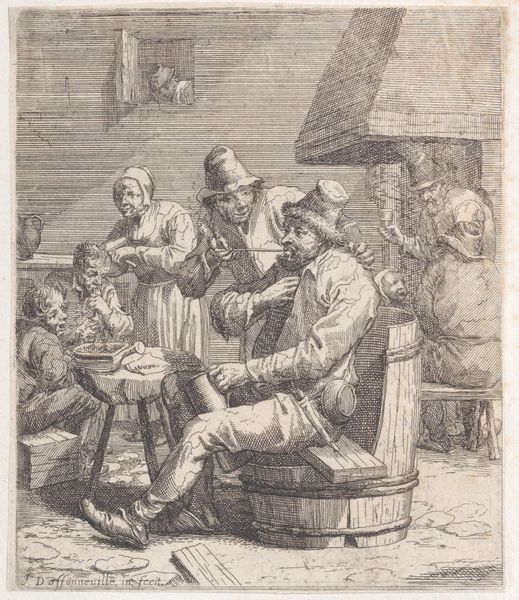
drawing, print, engraving
#
drawing
#
narrative-art
#
baroque
# print
#
figuration
#
men
#
genre-painting
#
history-painting
#
engraving
Dimensions: Sheet (Trimmed): 12 5/16 × 15 13/16 in. (31.3 × 40.1 cm)
Copyright: Public Domain
Curator: Welcome. The work before you is titled "Jupiter and Mercury with Philemon and Baucis." It's an engraving from the Baroque period, sometime between 1622 and 1675. The scene depicts a moment from Ovid’s *Metamorphoses*. Editor: It strikes me first with its somewhat gloomy mood, despite depicting gods visiting mortals. There’s a certain severity in the use of light and shadow—the forms emerge starkly from the darkness. What’s catching your eye, Iconographer? Curator: The story itself, of course! Jupiter and Mercury, disguised as humble travelers, are testing the hospitality of the locals. Everyone turns them away except the elderly couple, Philemon and Baucis. Their piety is rewarded, everyone else is punished. Notice the goose, which the old couple are attempting to sacrifice to honor their guests—the symbolic representation of hospitality. It suggests humility, sacrifice, and the divine hidden within the ordinary. Editor: Absolutely. I see the compositional elements mirroring those values, as well. The tight framing, the figures clustered closely—emphasizes their humbleness, in contrast to the potentially infinite space implied in Baroque style. Note the intense gaze Mercury directs toward Philemon and Baucis: his face is largely shaded and this intensifies the encounter, while at the same time establishing a powerful geometric core. Curator: That gaze! It reflects divine judgement, certainly. It’s more than just politeness; it suggests the weight of the impending divine intervention. There’s cultural memory embedded here, connecting back to stories of disguised deities testing moral fiber. And those themes, around kindness and the sacredness of the domestic space...it echoes through centuries, doesn’t it? Editor: I agree. It also illustrates a mastery of line—look at how precise the hatching is, building up tone and volume to create texture, for the goose, the wood panelling and even rendering cloth believably. The engraving highlights the drama and potential energy characteristic of its period in art. Curator: Ultimately, this piece speaks to the enduring human need for moral order, offering a visual meditation on consequence. Editor: A visual contract where lines serve morality. Looking closely, it asks us: can virtue really emerge from the humblest setting? Thank you for your thoughts!
Comments
No comments
Be the first to comment and join the conversation on the ultimate creative platform.

